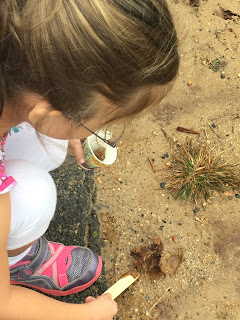Second Grade Pilgrims Learn about Plymouth Village
Second graders learned about the measurements of the Pilgrim homes.
They were pretty small compared to many of our houses today!
Students used their "boats" to measure out the length of the Pilgrim's common house wall. The tricky part? They had to rotate the shapes of the boats in order to map out 20 square feet!
Next, students learned that Pilgrim houses were made of thatch (dried grass), daub (mud and manure), and wood.
Students went outside to collect natural resources to make Pilgrim house replicas.
Building with daub can be messy work!
(Of course, we decided as a class that our daub could be manure-free...)
Later, students compared living in Plymouth Village to living on the Mayflower.
After completing the compare/contrast lesson, students were able to pick which place they would rather live. They produced some wonderful writing samples!
Second Grade Pilgrims:
Planting in the New World
Students were very excited to learn that the Pilgrims brought seeds with them to plant crops in the New World. They were eager to plant seeds of their own -- but they were met with a considerable surprise challenge...
THE SOIL WAS FROZEN!
After students came to the conclusion that planting would have to wait until spring, they began to learn more about foraging for local food. Avoid those nightshade berries!
Students then researched exotic fruits and vegetables (ever heard of a jackfruit?), and they contemplated what this may have been like for the Pilgrims.
Luckily, the Wampanoag were there to show the Pilgrims which plants would grow in the area and how to yield fertile crops. Squanto showed the Pilgrims the strategy of using three fish to fertilize each corn plant.
To transform our knowledge into problem solving, students used multiplication to see how many fish would be needed to fertilize a given number of plants.
Student samples of multiplication problem solving.



























